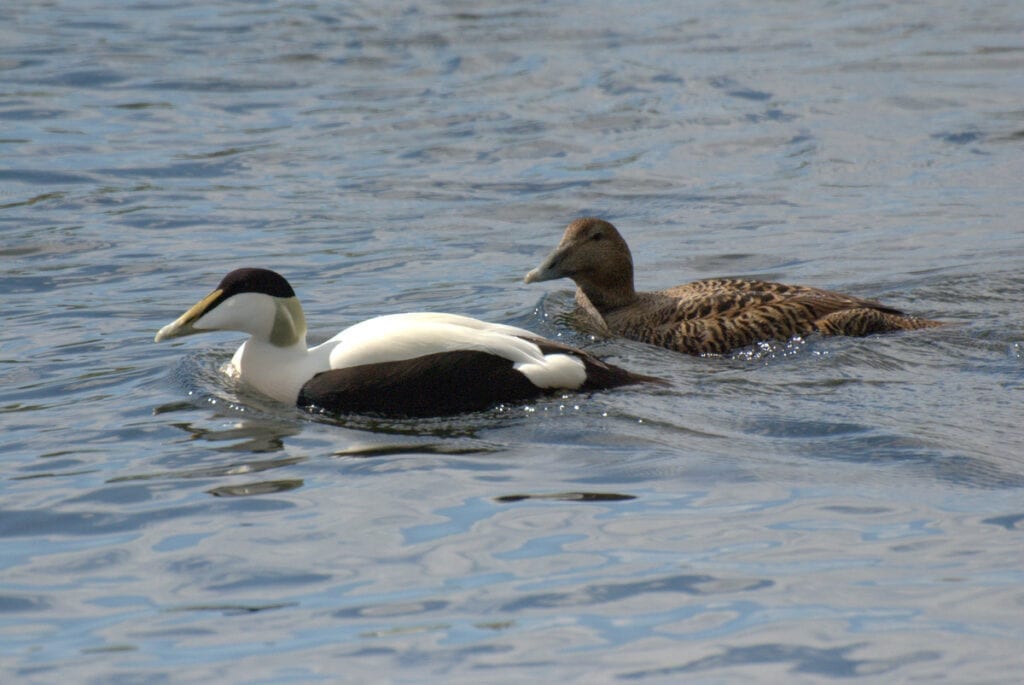A warmer ocean is bad news for eiders
The common eider is a large diving duck that can be found along the entire coast of Norway, but its numbers are decreasing. Researchers have registered declining eider populations over several years without being able to point to any specific explanation for the decline. They know that introduced American mink and birds of prey pose an increasing threat to adult eiders and that egg-predators, such as crows and large gulls, may have negative impacts on reproduction. Now, researchers have discovered that ocean warming is a direct cause of population decline in this species.
Warmer ocean increases mortality
Researchers at NINA – Norwegian institute for nature research – at the Fram Centre in Tromsø have applied population models to show that co-occurrence of two or more negative factors, such as climate change, predation and pollutants, may cause population decrease in eiders and ultimately lead to extinction, even though the stressors are not lethal when occurring separately. The analysis is based on more than 30 years of data on sea temperature and adult eider survival and reproductive investment (number of eggs laid).
-It turns out that when the sea surface temperature rises, the mortality in adult eiders increases, says Sveinn Are Hanssen at NINA. He characterizes the findings as sensational and worrying. Together with his colleagues Bård-Jørgen Bårdsen and Jan Ove Bustnes, he has recently published an article on the subject.

Photo: Arne Follestad
Delayed effect
The researchers found that an increase in the average temperature in March had a strong negative effect on the survival rate of adult common eiders the same year. At the same time, the results of the study also showed that survival was negatively correlated to ocean temperature three years before, implying a delayed effect of temperature increase.
-It is difficult to determine which mechanisms are at play here, but a delayed effect indicates that changing sea temperatures have an indirect effect on the eiders. A warmer ocean may affect the birds through their diet or through parasites and diseases, says Bård-Jørgen Bårdsen.
Relations to extreme weather
Nonetheless, the strongest effect of ocean temperature on survival rate was the direct one (within the year of temperature increase). Considering the fact that the common eider is a hardy species with a European distribution from the Netherlands in the south to Svalbard and Franz Josef Land in the north, it might be hard to imagine that a small increase in sea temperature can kill the birds. But one should bear in mind that a warmer ocean may be related to other weather phenomena such as storms, hurricanes and polar lows which, in the worst cases, may kill the birds during winter. So far, the researchers have no clear explanation to this, but it is something they will study in the time to come.
-The results of our study are exciting, and they may provide new perspectives on how climate change and other stressors affect survival in free-ranging animal populations, which, in turn, may improve our ability to predict any effects of global warming, says Sveinn Are Hanssen.
Read the article:
First published at www.framsenteret.no
Contact person: Sveinn Are Hanssen, NINA